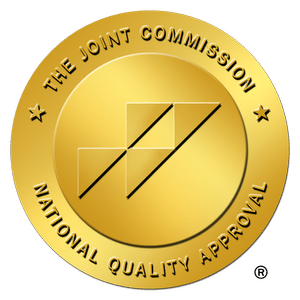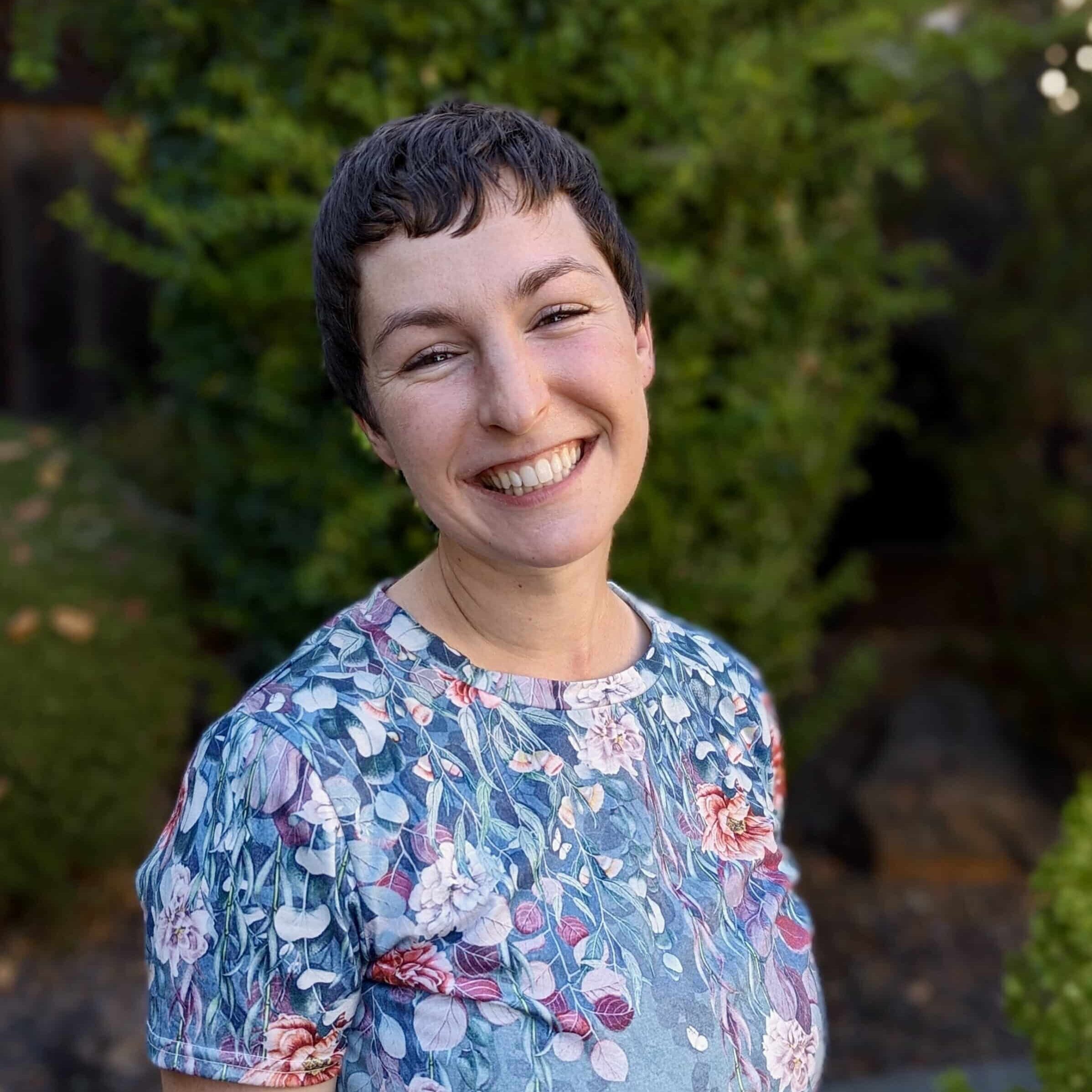Choosing the right mental health treatment is very important for effective recovery, as it lays the foundation for sustainable healing and growth. This guide compares Partial Hospitalization Programs (PHP) and Intensive Outpatient Programs (IOP), providing insights to help readers make an informed decision tailored to their needs.
Understanding PHP and IOP
What is PHP?
Partial Hospitalization Programs (PHP) are a form of structured mental health treatment designed to provide an intensive level of care without requiring patients to stay overnight in a hospital. Typically, PHPs operate during daytime hours, five to seven days a week, and patients spend several hours each day at the facility.
The structure of a PHP is designed to bridge the gap between inpatient hospitalization and outpatient therapy. It offers a comprehensive approach, including individual therapy, group therapy, medication management, and other therapeutic activities. This setup allows for a high degree of personalized care while enabling patients to apply coping strategies and lessons learned in their everyday environments outside of program hours.
PHP is best suited for those who require more support and structure than traditional outpatient care can provide but do not need 24-hour supervision. It’s ideal for those transitioning from an inpatient setting, in which case to go to PHP a client would need to be in partial remission, or have completed residential treatment. It’s also suitable for those experiencing a deterioration in their mental health who need stabilization without full hospitalization. This level of care is particularly beneficial for individuals dealing with severe mental health disorders, such as major depressive disorder, anxiety disorders, bipolar disorder, and others, who are stable enough to not require constant medical supervision.

What is IOP?
Intensive Outpatient Programs (IOP) are a type of treatment designed to offer focused and intensive therapeutic support for individuals with mental health or substance use disorders, without the need for overnight hospitalization. IOPs typically require participants to attend therapy sessions for a few hours per day, several days a week, allowing them to continue living at home and, in some cases, maintain work or school commitments.
The structure of an IOP includes a combination of individual counseling, group therapy, educational sessions about mental health and coping strategies, and possibly family therapy. This setup aims to provide a supportive environment where individuals can work on their recovery while applying learned strategies in real-world settings. The flexible schedule is particularly designed to accommodate those who have personal or professional obligations but still require a significant level of support.
IOP is ideal for individuals who are transitioning from a PHP or inpatient treatment, as it offers a step down to a less intensive level of care. It’s also suitable for those who need more support than what is available through traditional outpatient services but do not require the intensive supervision of a PHP. Candidates for IOP are typically those with a stable living situation and a supportive home environment, who are committed to recovery and have the ability to manage their symptoms with a less structured level of care.
Key Differences Between PHP and IOP
Understanding the key differences between Partial Hospitalization Programs (PHP) and Intensive Outpatient Programs (IOP) is essential for making an informed decision about mental health care. While both offer structured environments for recovery outside of inpatient settings, their approaches and commitments vary to suit different needs and stages of treatment. Here are the primary differences between PHP and IOP in Utah:
Level of Care and Support
PHP provides a more intensive level of care compared to IOP, offering a bridge between inpatient treatment and traditional outpatient services. It’s designed for those who require significant therapeutic support but not 24-hour supervision.
IOP offers a less intensive level of care, suitable for individuals who are stable enough to not need daily supervision but still benefit from a structured support system.
Time Commitment
PHP typically requires a higher time commitment, with patients spending several hours a day, five to seven days a week at the facility.
IOP involves a lesser time commitment, often requiring attendance for a few hours per day, three to five days a week, allowing more flexibility for other life activities.
Living Arrangements
Both PHP and IOP allow patients to live at home, but PHP might require a more flexible schedule or temporary leave from work or school due to its more demanding schedule.
Cost Considerations
PHP generally costs more than IOP due to the higher level of care and longer daily engagement.
IOP can be more cost-effective, providing a structured treatment option with less time required on-site.
Treatment Methods and Focus
PHP offers a comprehensive approach, including individual therapy, group sessions, medication management, and other therapeutic activities tailored to those needing closer supervision.
IOP focuses on group therapy as the primary method of treatment, supplemented by individual counseling and educational sessions, ideal for those integrating recovery efforts with daily life.
Choosing between PHP and IOP depends on the individual’s specific needs, including their mental health status, recovery goals, and personal circumstances.
Advantages and Disadvantages
Partial Hospitalization Programs (PHP)
PHPs offer several benefits for individuals seeking intensive mental health treatment while still maintaining some degree of autonomy in their daily lives. Here are the key advantages:
Comprehensive and Intensive Care: PHP provides a high level of care that is more intensive than outpatient therapy but less restrictive than inpatient treatment. This allows for a thorough and focused approach to treatment in a structured environment.
Daily Structure without Overnight Stay: Patients benefit from a structured therapeutic schedule during the day, which helps in establishing routines and incorporating therapeutic practices into daily life, without the need for overnight hospitalization.
Access to a Multidisciplinary Team: PHPs typically offer access to a wide range of mental health professionals, including psychiatrists, psychologists, therapists, and social workers, ensuring a comprehensive and multidisciplinary approach to treatment.
Opportunity for Real-time Application: Since patients return home after the day’s sessions, they have the opportunity to apply the coping strategies and skills learned in therapy to real-life situations, enhancing the practical application and effectiveness of treatment.
Transition Support: PHP serves as an excellent transitional step for individuals moving from inpatient care to outpatient care, providing the necessary support to adjust to everyday life while continuing to receive intensive treatment.
Group Support: Many PHPs include group therapy as a core component, offering patients the chance to share experiences, learn from others, and build support networks with individuals facing similar challenges.
Flexibility: While PHP is structured and intensive, it also offers more flexibility than inpatient treatment, allowing individuals to maintain some personal and professional commitments during their recovery process.
Intensive Outpatient Programs (IOP)
IOPs have the following benefits:
Flexibility: IOP allows individuals to continue with their daily life activities, such as work, school, or family responsibilities, while receiving treatment. This flexibility is especially beneficial for those who cannot commit to the time requirements of more intensive programs.
Real-life application: Since participants live at home during IOP, they have the opportunity to apply the coping strategies and skills learned in therapy directly to their everyday challenges and environments, enhancing the practicality of their treatment.
Support network: IOPs often include group therapy sessions, which provide a sense of community and support. Participants can share experiences and strategies, building a network of peers who understand their struggles and can offer real-time support.
Cost-effectiveness: Generally, IOPs are less expensive than PHPs or inpatient treatment due to the reduced need for medical supervision and overnight stays. This can make mental health care more accessible to those with limited financial resources.
Continuity of care: For those stepping down from a PHP or inpatient treatment, IOP serves as an intermediate step that maintains a high level of care but with increased independence. This can help ease the transition and reduce the risk of relapse.
Tailored treatment: While providing structure, IOPs also offer personalized treatment plans, including individual therapy, that address the specific needs and goals of each participant, fostering more personal growth and progress in recovery.
Accessibility: Many IOPs offer sessions during evenings and weekends, making it easier for individuals to attend without disrupting their regular schedules, thereby increasing the likelihood of sustained participation and success in the program.
Considerations and Challenges
Both Partial Hospitalization Programs (PHP) and Intensive Outpatient Programs (IOP) offer distinct advantages, but they also come with their own set of challenges and considerations. Understanding these can help individuals and their families make informed decisions about which program is most suitable for their needs.
PHP Considerations and Challenges
Intensity and Time Commitment: PHP requires a significant time commitment, often meeting five to seven days a week for several hours a day. This intensity can be challenging for individuals who have work, school, or family obligations.
Transition to Everyday Life: While PHP provides a structured environment, some individuals may find it challenging to apply what they’ve learned to their daily lives outside of the program.
Cost: Because PHP is more intensive than IOP, it can be more expensive. While insurance may cover part of the cost, the out-of-pocket expenses can still be substantial.
Emotional Exhaustion: The intensive nature of PHP can be emotionally exhausting for some participants, as it often involves deep and frequent engagement with challenging psychological issues.
IOP Considerations and Challenges
Balancing Responsibilities: While IOP allows for more flexibility compared to PHP, balancing treatment with work, school, or family life can still be challenging for some individuals.
Level of Support: IOP offers less frequent contact hours than PHP, which might not be sufficient for individuals in need of more intensive support and supervision.
Self-Discipline: Success in IOP often requires a higher level of self-discipline and motivation, as individuals must apply the strategies they learn in treatment to their daily lives without the structured support of a full-day program.
Social Isolation: For some, the reduced hours in IOP might lead to feelings of isolation or lack of support, especially if they don’t have a strong support system outside of the program.
Choosing between PHP and IOP involves weighing these considerations against the individual’s current needs, their support system, and their ability to cope with their mental health challenges outside of a structured program. It’s often beneficial to consult with mental health professionals to make the most informed decision.

PHP vs IOP: Making the Right Choice
When choosing between a Partial Hospitalization Program (PHP) and an Intensive Outpatient Program (IOP), several critical factors must be considered to ensure the selected program aligns well with your specific needs and circumstances. These considerations will help you make an informed decision that supports your path to recovery.
Assessing Your Needs: Factors to Consider
Severity of Condition: Evaluate the intensity of your mental health or substance use disorder. PHP may be more appropriate for individuals with moderate to severe conditions who require close medical supervision and intensive support, but who do not need 24-hour care. In contrast, IOP may be suitable for those with mild to moderate conditions who need structured support but can manage more independence.
Support System: Consider the strength and availability of your support system outside of the treatment program. Individuals with a strong network of family and friends who can provide support may find IOP a viable option. Those with limited support or who are at a higher risk of relapse may benefit more from the structured environment of a PHP.
Work or School Commitments: Your ability to commit to the intensity of a program while managing work, school, or other responsibilities is crucial. PHP requires a significant time commitment that may not be feasible for individuals with demanding schedules. IOP offers more flexibility, allowing for treatment without fully stepping away from daily responsibilities.
Insurance Coverage and Financial Aspects: Understand your insurance coverage and the potential out-of-pocket costs for each program. PHPs are generally more expensive due to their intensive nature, but insurance may cover more of the cost due to the level of care provided. Compare this with the coverage and costs for IOP, considering your financial situation and what you can afford.
By carefully considering these factors, you can better assess which type of program—PHP or IOP—is the right fit for your specific situation, ultimately supporting a more effective and sustainable recovery journey.
Questions to Ask Providers
When evaluating Partial Hospitalization Programs (PHP) and Intensive Outpatient Programs (IOP), asking the right questions can help you determine the best fit for your needs. Here’s a checklist of questions to ask providers:
General Questions for Both PHP and IOP
- What is the program’s philosophy and approach to treatment?
- Can you provide a detailed schedule of a typical day or week in the program?
- What types of mental health professionals are on staff, and what are their qualifications?
- How does the program tailor treatment to individual needs?
- What types of therapy and services are offered (e.g., individual therapy, group therapy, family therapy, medication management)?
- How does the program integrate or coordinate care with other healthcare providers or specialists I might be seeing?
- What is the expected duration of the program, and what factors might influence this?
- How does the program handle emergencies or crises?
- Can you provide information on success rates or outcomes for participants of the program?
Questions Specific to PHP
- What is the process for transitioning from an inpatient setting to PHP, if applicable?
- How does the program support reintegration into daily life outside of treatment hours?
- What level of medical or psychiatric supervision is provided during program hours?
Questions Specific to IOP
- How flexible is the schedule, and can it accommodate work, school, or family commitments?
- What support services are available for participants struggling to balance program commitments with external responsibilities?
- How does the program foster a sense of community or support among participants?
Insurance and Financial Questions for Both PHP and IOP
- What insurance plans do you accept, and what is typically covered?
- Are there any out-of-pocket costs I should expect, and what are the payment options?
- Do you offer any financial assistance or sliding scale fees based on income?
Asking these questions can provide crucial information to help you make an informed decision about which program is best suited to support your mental health journey.
PHP and IOP Successes
PHP Success Story
Journey: Emma, a 34-year-old woman, was struggling with severe depression and anxiety following a series of personal and professional setbacks. Her condition had deteriorated to the point where her safety and daily functioning were compromised, making it difficult for her to maintain her job and relationships. Emily was referred to a PHP after a brief inpatient hospitalization, which provided a structured and supportive environment without requiring her to stay overnight in a hospital.
Outcomes: Over eight weeks, Emily engaged in daily therapeutic sessions, including individual therapy, group therapy, and medication management. The comprehensive support helped her develop coping mechanisms, improve her mood, and restore her functional abilities. By the end of the program, she had returned to work part-time and reported significantly reduced symptoms of depression and anxiety. Emily’s journey through PHP offered her the intensive care she needed while allowing her the flexibility to start rebuilding her life outside the program.
IOP Success Story
Journey: Alex, a 29-year-old graphic designer, was navigating the complexities of bipolar disorder, which affected his work performance and personal relationships. Despite his talent, the fluctuating cycles of manic energy and depressive lows made it challenging to meet deadlines and maintain a stable social life. Alex sought a solution that would allow him to address his mental health needs without completely stepping away from his career and creative passions. He found an Intensive Outpatient Program (IOP) that offered the flexibility he needed.
Outcomes: In the IOP, Alex participated in individual therapy, psychoeducational groups to understand his condition better, and skill-building sessions focused on emotion regulation, stress management, and maintaining a healthy routine. The program also facilitated a support group for individuals with bipolar disorder, providing Alex with a community of peers who understood his experiences.
Balancing treatment with his professional life, Alex began to experience more stable moods, improved his time management, and developed strategies to handle the pressures of his job more effectively. By the end of the program, not only had Alex achieved a significant period of stability, but he also felt empowered to advocate for his mental health in both his personal and professional life. Alex’s journey through the IOP showcased how targeted, flexible treatment can help individuals with bipolar disorder lead fulfilling and productive lives.
Navigating Insurance and Costs
Navigating the financial aspects of mental health care, particularly when considering Partial Hospitalization Programs (PHP) and Intensive Outpatient Programs (IOP), can be daunting. Understanding insurance coverage and managing out-of-pocket expenses are critical steps in accessing the necessary treatment without undue financial strain. Here’s some guidance on dealing with insurance companies and managing costs, including finding financial assistance if needed.
Understanding Your Insurance Coverage
Start with Your Policy: Begin by thoroughly reviewing your insurance policy to understand what mental health services are covered. Look for specifics regarding PHP and IOP coverage, including any stipulations about pre-authorization, in-network versus out-of-network providers, co-pays, and deductibles.
Pre-Authorization: Some insurance plans require pre-authorization for PHP and IOP services. This means you’ll need approval from your insurance company before starting the program to ensure coverage. Contact your insurance provider to understand this process and any necessary steps.
Ask Direct Questions: When in doubt, directly contact your insurance company. Ask specific questions about the extent of your coverage for PHP and IOP, including the number of sessions or days covered, any limitations on the types of therapies included, and how much you can expect to pay out of pocket.
Managing Expenses
Budget Planning: Once you have a clearer understanding of what your insurance will cover, plan your budget for any anticipated out-of-pocket expenses. This might include deductibles, copayments, or any services not covered by your plan.
Payment Plans and Sliding Scales: Many treatment programs offer payment plans or sliding scale fees based on income. Don’t hesitate to ask providers about these options, as they can make a significant difference in affordability.
Finding Financial Assistance
Charitable Organizations: Some charitable organizations and nonprofits offer grants or financial assistance to individuals seeking mental health treatment. Research organizations related to your specific mental health condition for potential funding opportunities.
State and Local Resources: Explore state and local government programs that provide financial assistance for mental health services. These can vary widely by location but may offer another avenue for reducing treatment costs.
Hospital Charity Care: If your treatment provider is affiliated with a hospital, inquire about charity care programs. These programs are designed to help patients who are uninsured or underinsured cover the costs of care.
Navigating insurance and managing treatment costs require proactive communication and thorough research. By understanding your coverage, exploring all available financial assistance options, and engaging with providers about cost-effective treatment plans, you can access the care you need while minimizing financial stress.

Discover Corner Canyon Health Centers’ PHP and IOP Programs
At Corner Canyon Health Centers we offer personalized treatment plans for mental health among other approaches, we use:
- Cognitive Behavioral Therapy (CBT)
- Eye Movement Desensitization and Reprocessing (EMDR)
- Dialectical Behavioral Therapy (DBT).
A key feature of Corner Canyon is our use of innovative brain-based modalities, such as:
- Ketamine Assisted Psychotherapy
- Nutritional Psychiatry
- Stellate Ganglion Block (SGB) shot
- LGBTQ+ work
We ensure that our clients receive the most effective evidence-based treatments for their particular situation, facilitating the best possible outcomes.
Situated at the foot of the stunning Wasatch Mountains in Draper, Utah, Corner Canyon provides a serene and therapeutic setting that naturally fosters healing and growth, away from the stressors of everyday life.
Our holistic approach to treatment significantly contributes to the overall recovery process. We offer:
- The Gut-Brain Diet and healthy menus are based around this.
- Experiential Therapy.
- Equine Therapy.
Corner Canyon’s PHP: A Closer Look
We also offer a highly specialized PHP, also known as a day treatment program. Our PHP is designed to provide clients with intensive therapy and support while allowing them to return to the comfort of their homes in the evenings. The program helps clients to gradually re-engage with their community, prepare for employment, and successfully re-enter school.
Our program includes a combination of individual and group therapy sessions, as well as life skills training, a crucial aspect of the program. Our team of Certified Case Managers works closely with clients to help them develop important life skills and future planning strategies.
We also offer flexible morning and mid-day start times to accommodate our clients’ schedules.
Exploring Corner Canyon’s IOP
For young adults and adults in recovery from mental health and addiction conditions, our Intensive Outpatient Program (IOP) provides:
- Flexibility to balance treatment with other commitments
- Comprehensive care tailored to individual needs,
- Benefits of peer support.
If you or someone you know is struggling with a mental health condition, consider the benefits of our IOP as a treatment option.
IOP is an effective treatment option for individuals who require more support than traditional outpatient services, yet don’t require the round-the-clock care of a hospital or residential treatment program.
IOP is a less restrictive and more flexible approach to mental health recovery. This makes it an attractive option for young adults and adults seeking treatment.
Our IOP provides clients with highly individualized treatment through one-on-one sessions with a primary therapist and group therapy sessions 3-5 times weekly.
IOP emphasizes community re-engagement, with many clients pursuing employment, volunteering, or attending local colleges.
Our treatment methods include the following evidence-based approaches:
- Attachment Therapy
- Accelerated Resolution Therapy
- Cognitive Processing Therapy
- Cognitive Behavioral Therapy
- Dialectical Behavioral Therapy
- Internal Family Systems Therapy
- Eye Movement Desensitization and Reprocessing (EMDR)
- Recreational and Experiential Therapy
Key Takeaways
- Choosing the right mental health treatment is very important for effective recovery, as it lays the foundation for sustainable healing and growth.
- Partial Hospitalization Programs (PHP) are a form of structured mental health treatment designed to provide an intensive level of care without requiring patients to stay overnight in a hospital.
- The structure of a PHP is designed to bridge the gap between inpatient hospitalization and outpatient therapy.
- Intensive Outpatient Programs (IOP) are a type of treatment designed to offer focused and intensive therapeutic support for individuals with mental health or substance use disorders, without the need for overnight hospitalization.
- Understanding the differences between PHP and IOP is important for making an informed decision about mental health care. While both offer structured environments for recovery outside of inpatient settings, their approaches and commitments vary to suit different needs and stages of treatment.
- Choosing between PHP and IOP depends on the individual’s specific needs, including their mental health status, recovery goals, and personal circumstances.
- Both PHP and IOP offer distinct advantages, but they also come with their own set of challenges and considerations.
- When choosing between a Partial Hospitalization Program (PHP) and an Intensive Outpatient Program (IOP), several critical factors must be considered to ensure the selected program aligns well with your specific needs and circumstances.
- When considering PHP and IOP choices, asking the right questions can help you determine the best fit for your needs.
- Understanding insurance coverage and managing out-of-pocket expenses are critical steps in accessing the necessary treatment without undue financial strain.
Sources
“Definition of partial hospitalization. The National Association of Private Psychiatric Hospitals and the American Association for Partial Hospitalization” PubMed, pubmed.ncbi.nlm.nih.gov/10106610/. Accessed 21 Mar. 2024.












